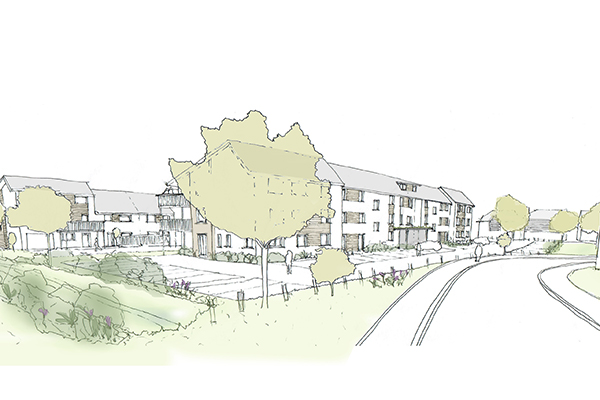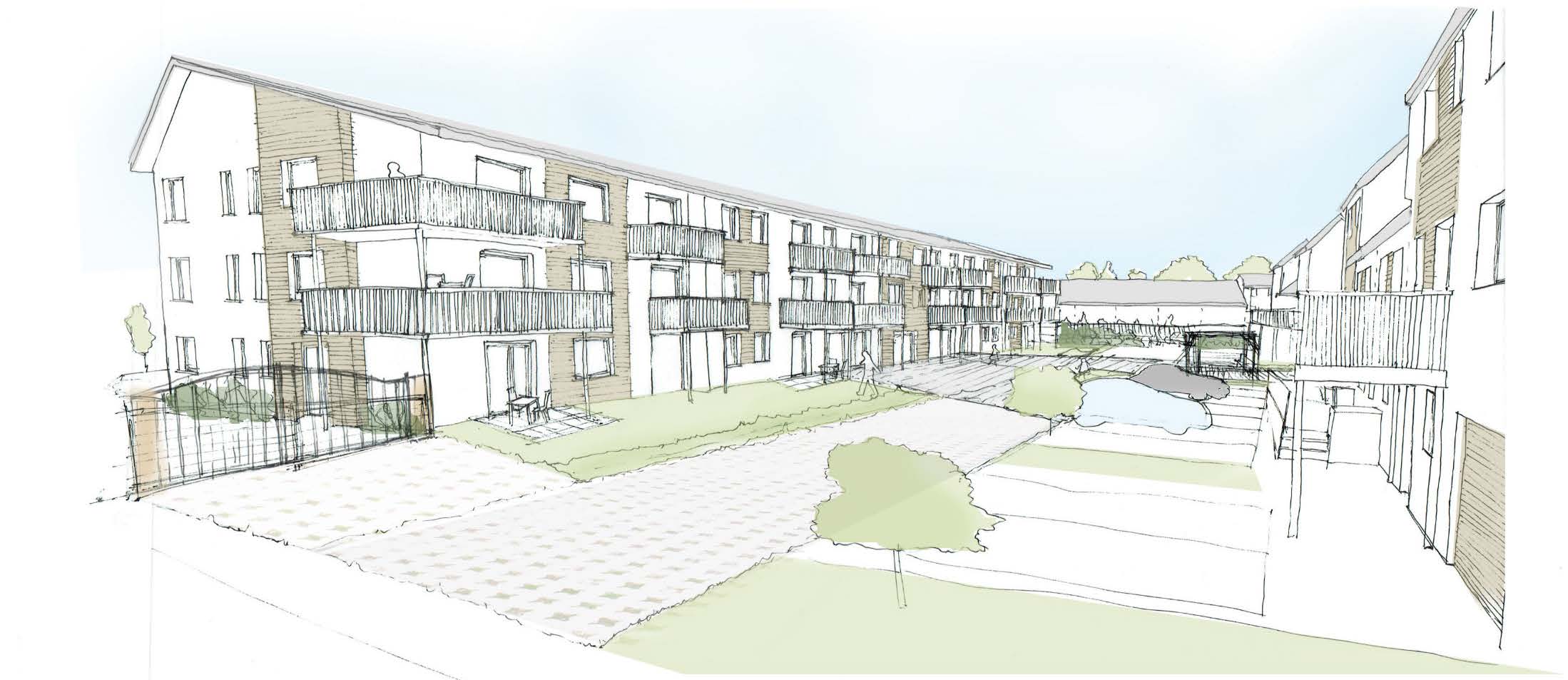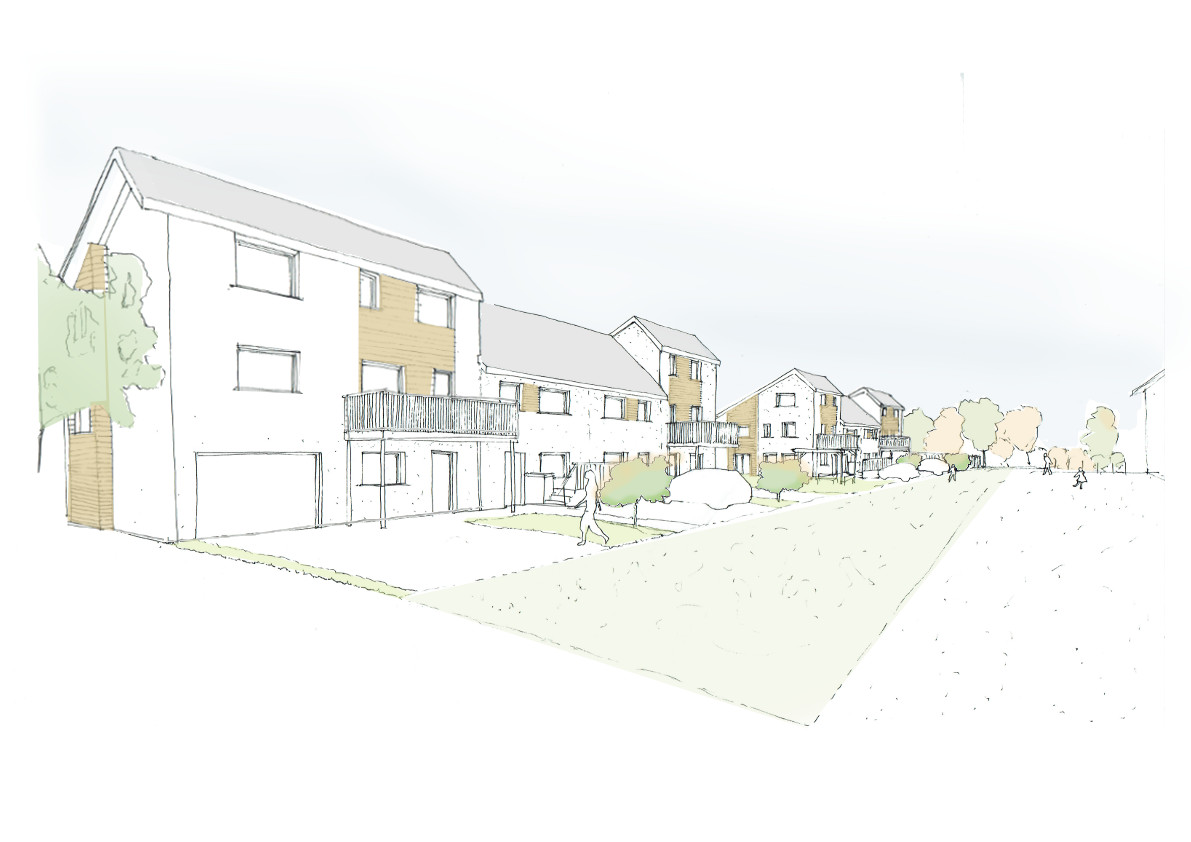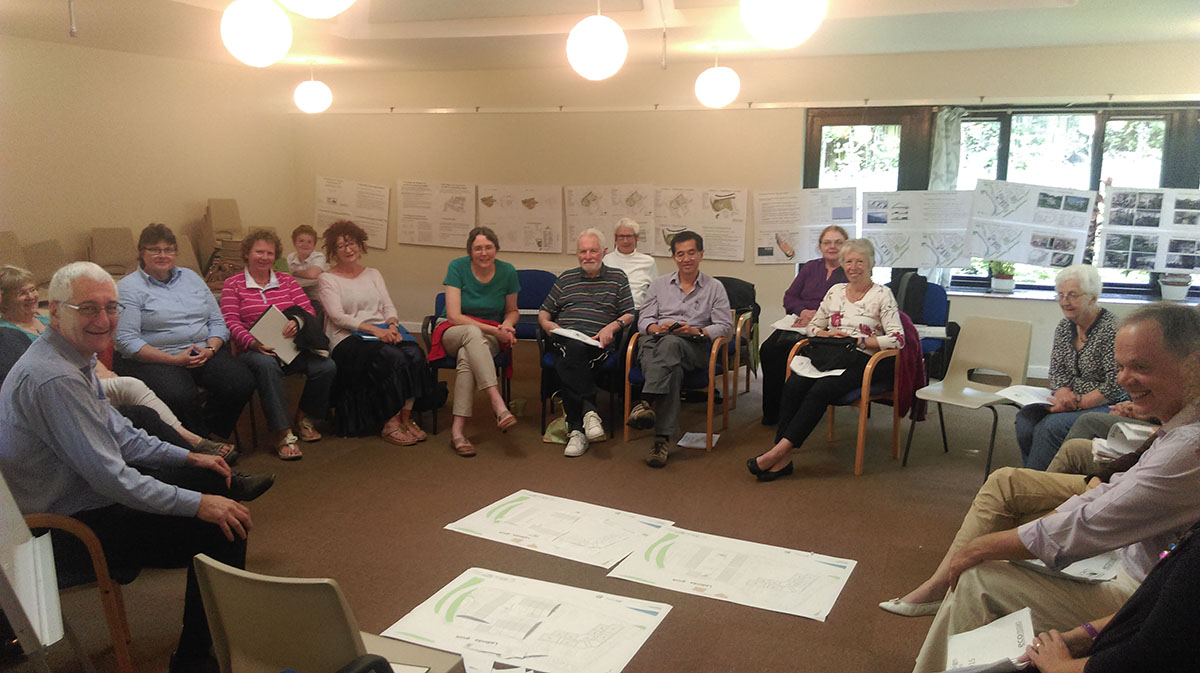Projects
Still Green Cohousing
Milton Keynes
Residential
Still Green is a Quaker based group who wish to create a cohousing community in Milton Keynes of 8 houses, 24 flats and a common house.
“People who choose cohousing .. Seek a sense of place fostered by regular dinners together; common space with cars parked at the periphery; consumer goods (lawn mowers, washers, dryers and the like) and property shared in common or own individually a each makes sense, in an effort to create a high-functioning neighbourhood where people know and care about each other” – (Charles Durrett – American architect and author with extensive knowledge of Danish cohousing schemes, architect of over 200 schemes in America and resident of 2 cohousing schemes)
“Whatever the form, cohousing projects share the six components:
1. Participatory Process: Residents help organize and participate in the planning and design process, and they are responsible as a group for the final decisions.
2. Deliberate Neighbourhood Design: The physical design encourages a strong sense of community.
3. Extensive Common Facilities: Common areas are an integral part of the community, designed for daily use and to supplement private living areas.
4. Complete resident Management: Residents manage the development, making decisions of common concern at community meetings.
5. Non-hierarchal Structure: There are not really leadership roles. The responsibilities for the decisions are shared by the community’s adults.
6. Separate Income Sources: Residents have their own private incomes; the community does not generate income.”
There is one key design steer– the design of Cohousing schemes endeavours to maximise the possibility of informal meeting of members of the cohousing group :
1. There are limited routes within the scheme which residents pass to maximise the chance of meeting others – a linear street or courtyard
2. With a single route to the cars, parked on the periphery of the site, there is more chance of meeting others on the way to the car
3. With the Common House on a principal route through the site
4. A buffer between private and common areas – in front of flats or houses, in which residents can sit and meet passers by (it could be a porch or patio at the front of unit)
5. Kitchens (the most populated part of a dwelling) facing the streets so residents can see passers by (and perhaps be seen…)
6. The idea extends to the design of the kitchen in the Common House, whose design should be sufficiently open to allow passers by to see and chat with “the cooks” whilst not impeding their activity/there should be sitting areas adjacent the kitchen and dining areas.
The group was offered a site at Monkston Park, which is bounded to the south by Standing Way, an elevated dual carriageway section of the A5, to the west by the River Ouzel with parkland beyond and by existing housing to the north and east. Standing Way presents a significant noise issue on the site.
The size of the site is such that additionally 8 houses for self builders could be provided (“neighbourhood houses”)
The scheme illustrated creates 2 parallel terraces of house alongside Standing Way to create a sound barrier to the shared external space to the north of the site which is enveloped by a building containing the flats with the common house at it hub. Parking is principally on the periphery of the site to the north and west of the flats.
Potter Church & Holmes and Eco-Design Consultants worked together as architects for the scheme. Their involvement included working with the group through a series of weekend design workshops and assisting with the financial feasibility.





